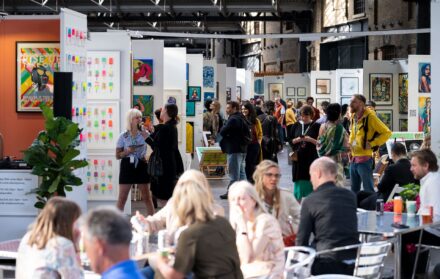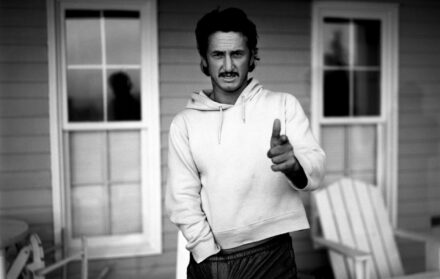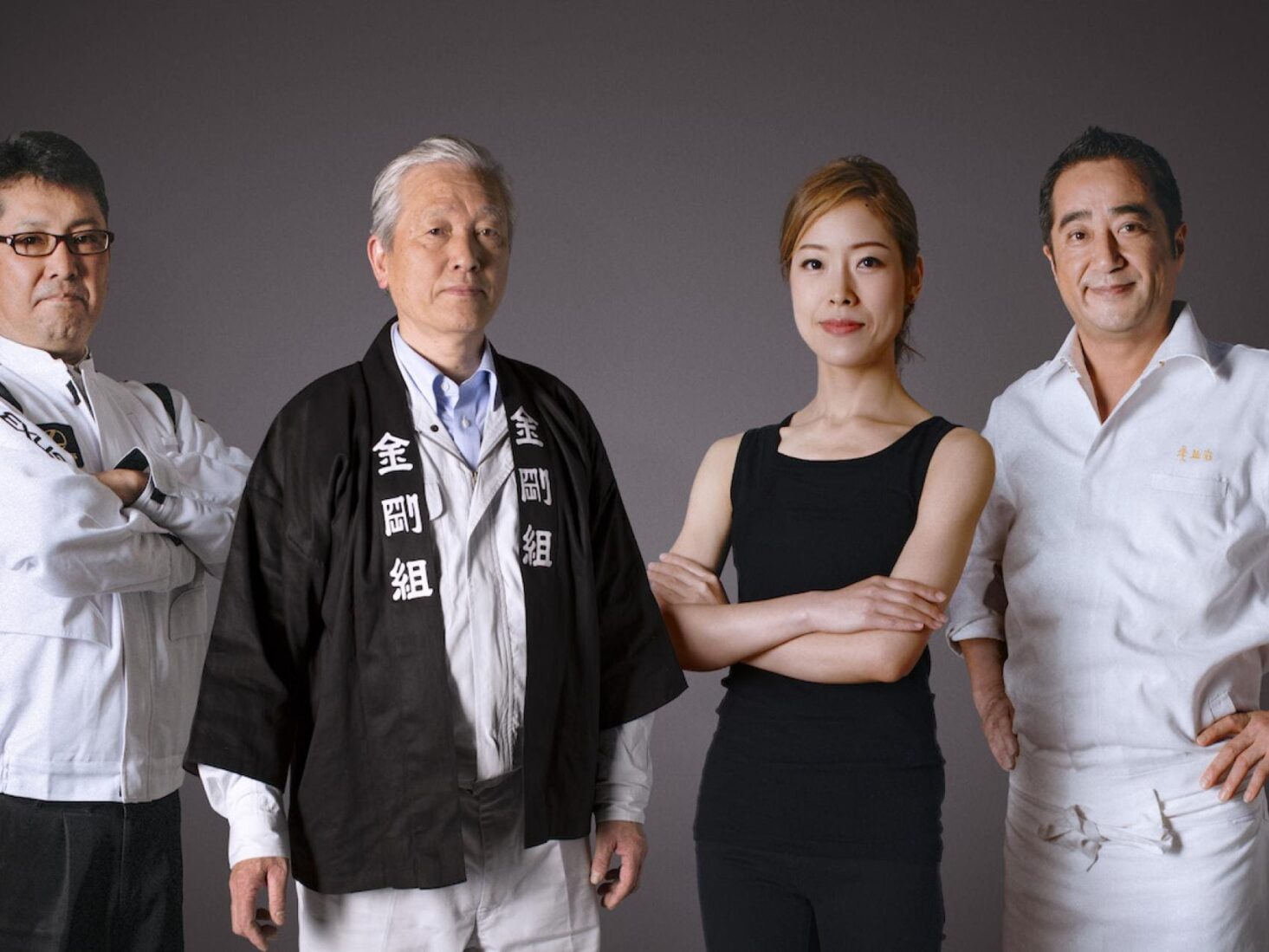
Watch a New Documentary by Lexus Dedicated to the Japanese Art of Takumi
What does it take to be Takumi, the highest level of artisan in Japan?
Malcolm Gladwell’s book Outliers states that if you spend 10,000 hours on a particular habit, you might just become an expert in that field. 10,000 hours, by the way, equates to 24 hours continuously for 417 days. Seems like a stretch? It is for most until you discover that in Japan there are certain individuals, nestled amongst the pine forests, bustling cities and factory floors, who have spent not 10,000 hours but 60,000 hours refining their craft. That’s almost seven years. These otherworldly individuals are known in Japan as takumi and are the subject of a unique documentary Takumi: A 60,000-Hour Story on the Survival of Human Craft.
As artificial intelligence makes its Orwellian expansion across all aspects of production, the documentary, made by Chef’s Table director, Clay Jeter, is refreshingly humanistic in its outlook. By 2050, it is estimated that machines will be capable of surpassing human performance in virtually every field. Martin Ford, author of Rise of the Robots: Technology and the Threat of a Jobless Future, explains “in the next 10 years, we’re going to see 10,000 years of progress” – hardly a surprise when we look at the technological progress, for example, in handheld technology. Before they were a fad, almost a nuisance; now they’re practically an extension of the human limb. With the inevitable spread of more efficient and ‘intelligent’ technology, what space is there for the master takumi and the thousands of hours it requires?
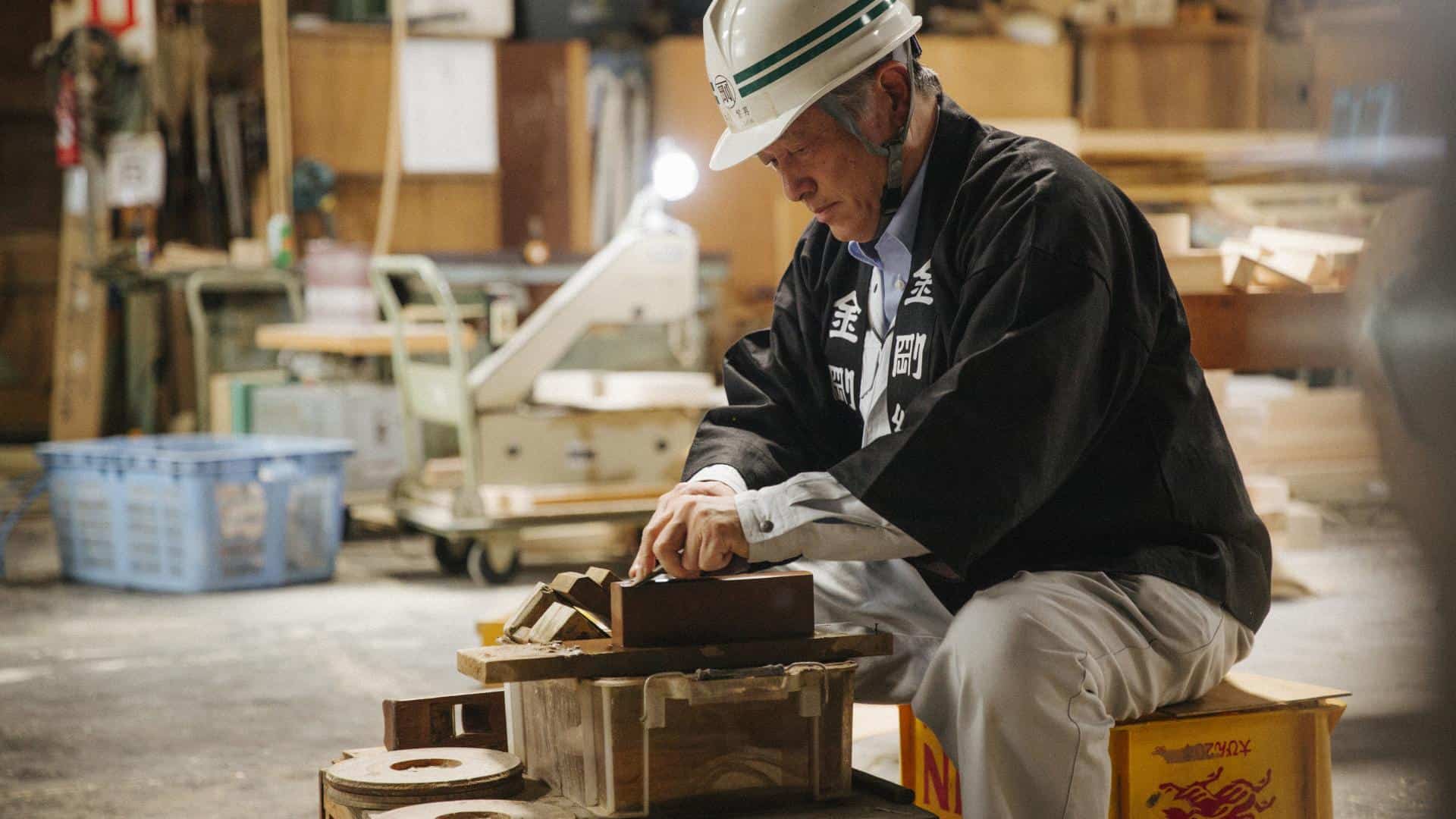 Shigeo Kiuchi, master takumi at Kongō Gumi
Shigeo Kiuchi, master takumi at Kongō Gumi
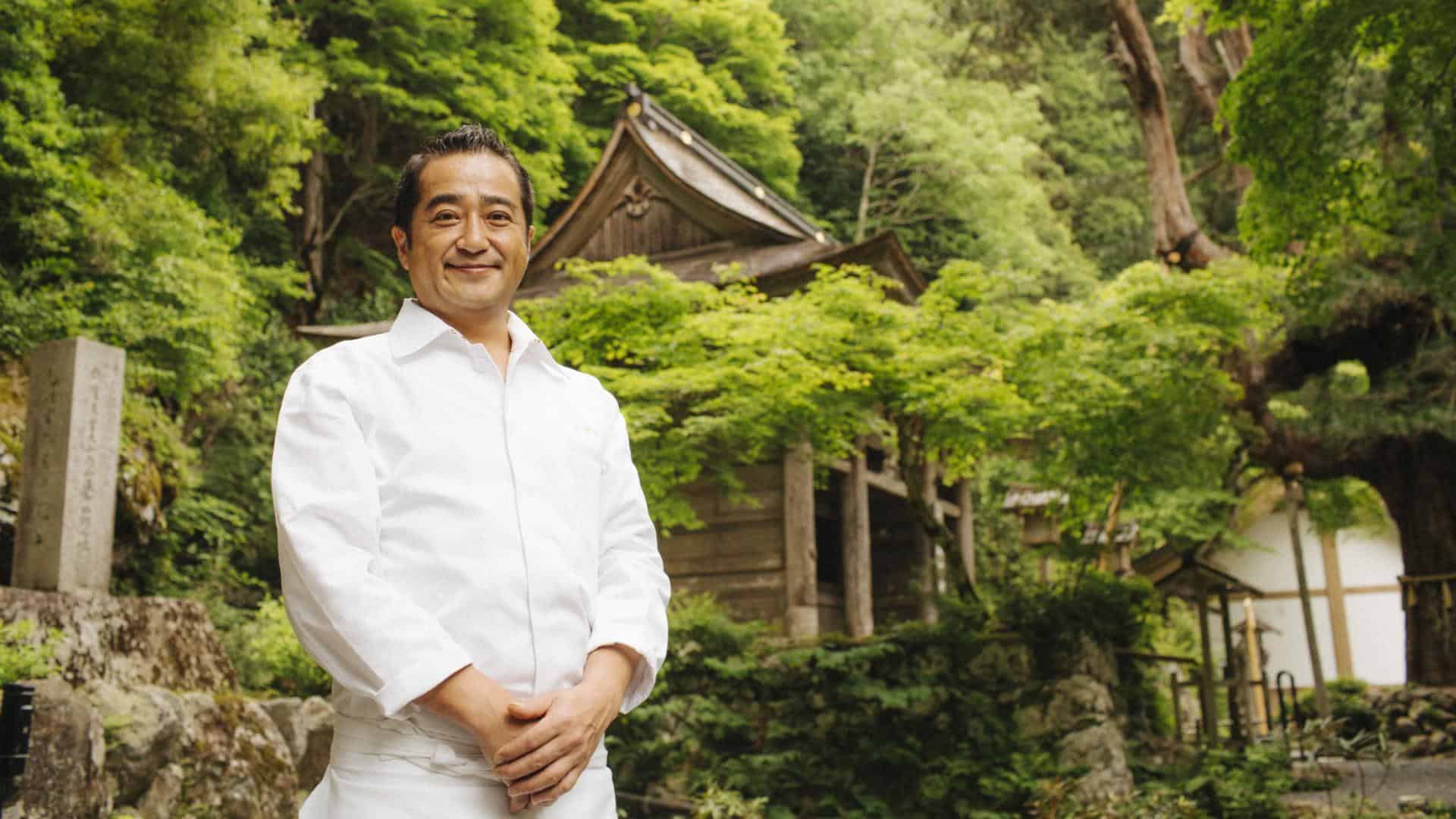 Hisato Nakahigashi, owner of Miyamasou, a two-Michelin star restaurant outside Kyoto
Hisato Nakahigashi, owner of Miyamasou, a two-Michelin star restaurant outside Kyoto
We encounter a miyadaiku (a temple carpenter), a kirie (paper cutting) artist, a master inspector at Lexus and a kaiseki chef. All of them are takumi and all of them have dedicated more than half of their lives in pursuit of their craft. “The essence of takumi is to gain a sublime understanding of the nuances of a particular art,” said Nahoko Kojima, the paper cutting artist. “To be focused and spend countless hours on one thing, and to carry on requires one to empty the mind and focus in a way that simply isn’t possible when still acquiring a skill.” Defying human patience and persistence, one of her kirie artworks expands the entire floor space of her studio. Since kirie dictates that all artworks be crafted on a single sheet of paper, a single tear or rip means starting the entire process over again.
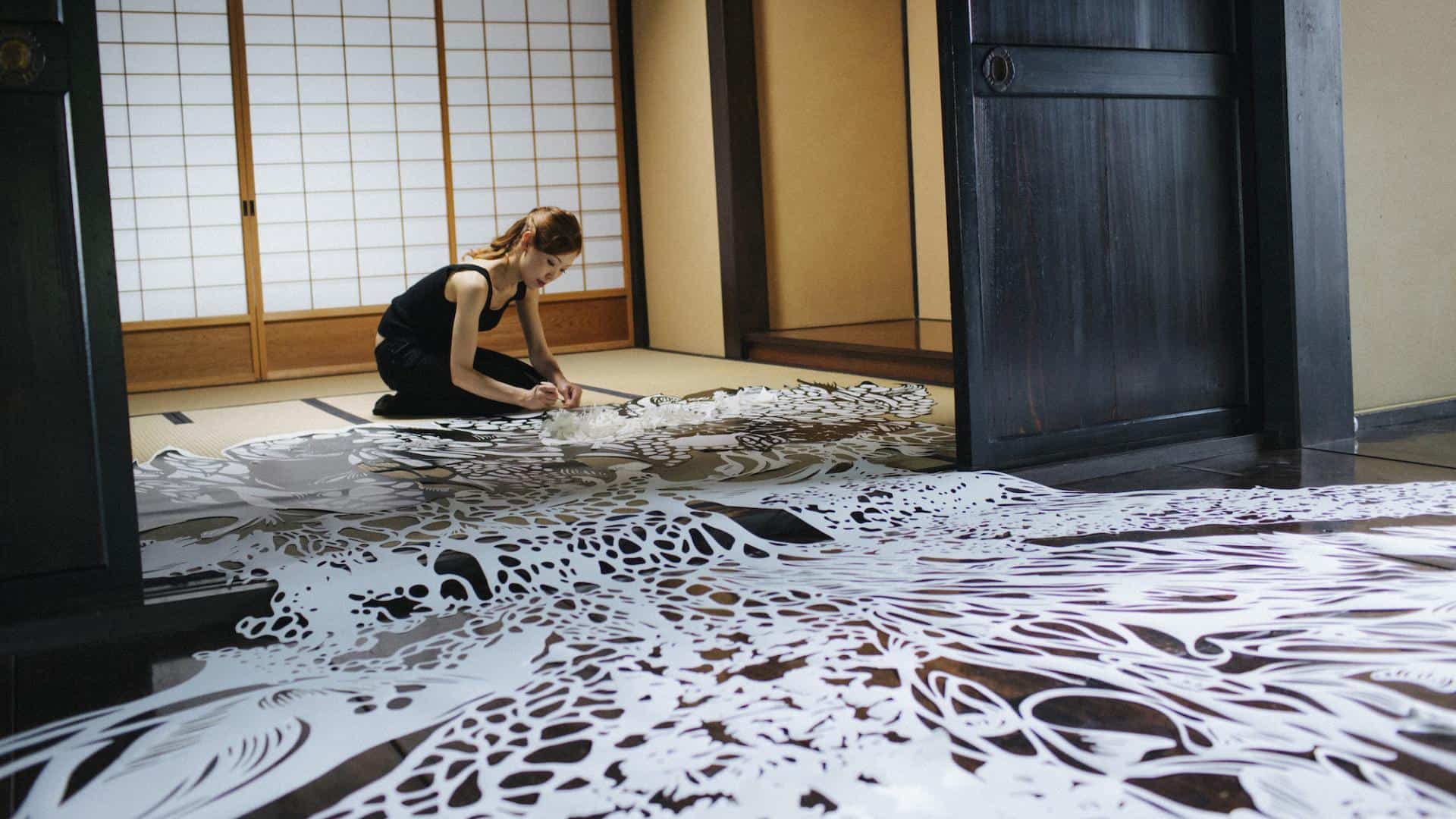 The artist at work in her studio
The artist at work in her studio
There’s a profoundly meditative aspect to the work that they do, that imbues the viewer with a sense of calm contemplation. At Lexus we meet Mr Suganuma, who is living proof that humans often trump machines at the same task. With a quarter of a century’s training, his eye is razor-sharp like an eagle’s, observing and scanning the vehicle’s bodywork for any signs of imperfection. His white-gloved hands run up and down the bodywork with a beauty no machine can replicate. There’s a moment when he alerts a colleague that a car has failed inspection- the gap between the door panel is just a few millimetres too wide. At Lexus, the human has the final say. Alongside the clinical whirling robots, there are breathing sentient takumi masters who pour all of their blood, sweat and tears into honing their skills. Among the 7,700 workers at Lexus’ plant in Kyushi, there are just 19 Takumi. There is no higher honour within their engineering ranks.
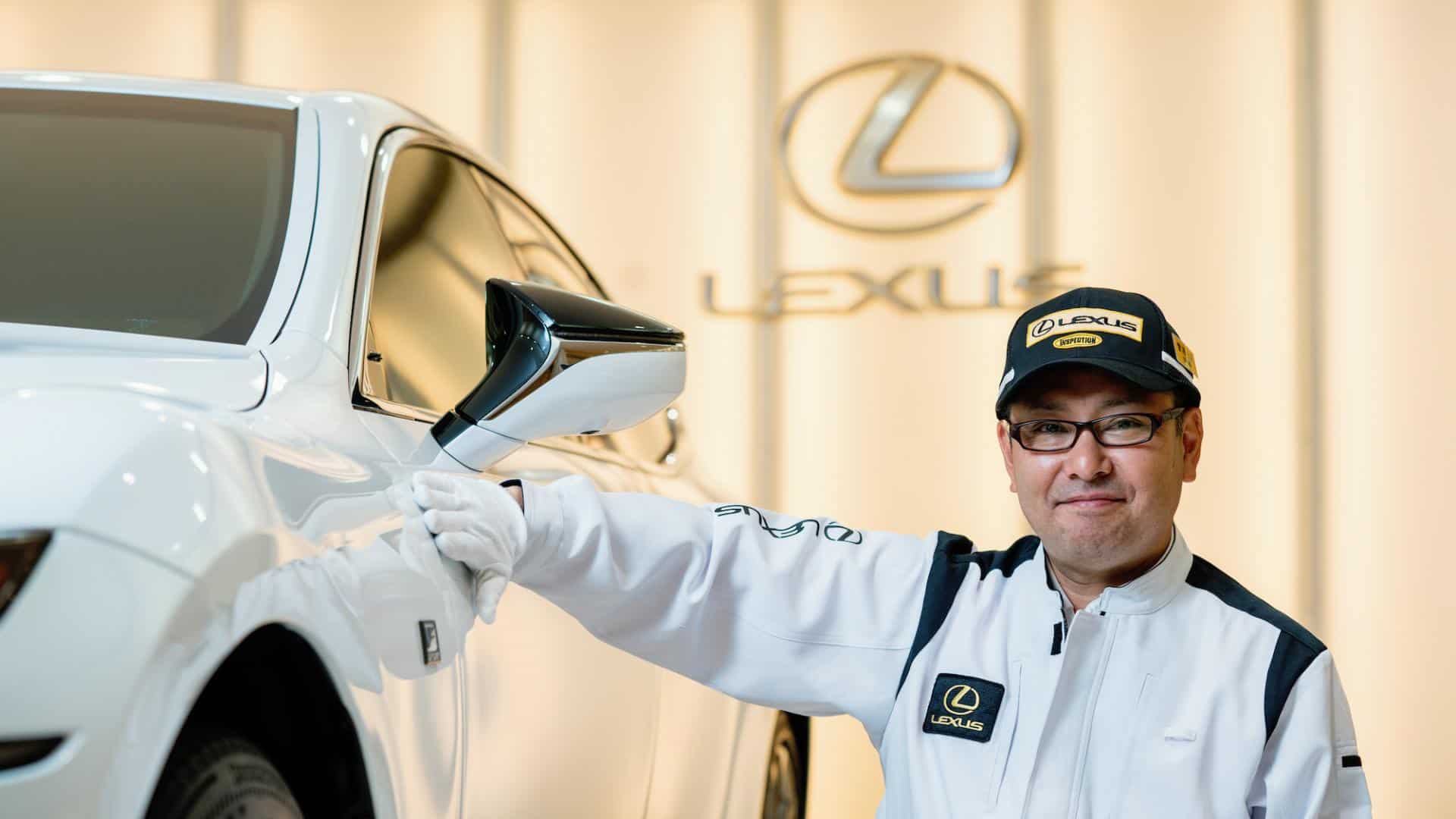 Katsuaki Suganuma, master takumi at Lexus
Katsuaki Suganuma, master takumi at Lexus
In the lush green forests surrounding Kyoto, Miyamasou nestles in a deep valley by a bubbling stream. Cedars and pines encircle the inn, and great respect is paid to the rhythm of mother nature. “For Hisato, his turning point came when he was 20,000 hours into his takumi journey,” says the documentary’s director Clay Jeter. “His father died unexpectedly at the age of 55, and Hisato had been finessing his craft working in fine dining restaurants overseas. However (at this pivotal point in his life) he made the decision to come home and continue the legacy and he’s really elevated the restaurant to something extraordinary.” Kaiseki means going above and beyond for your guest – Hisato rises at dawn to forage for ingredients for his guests.
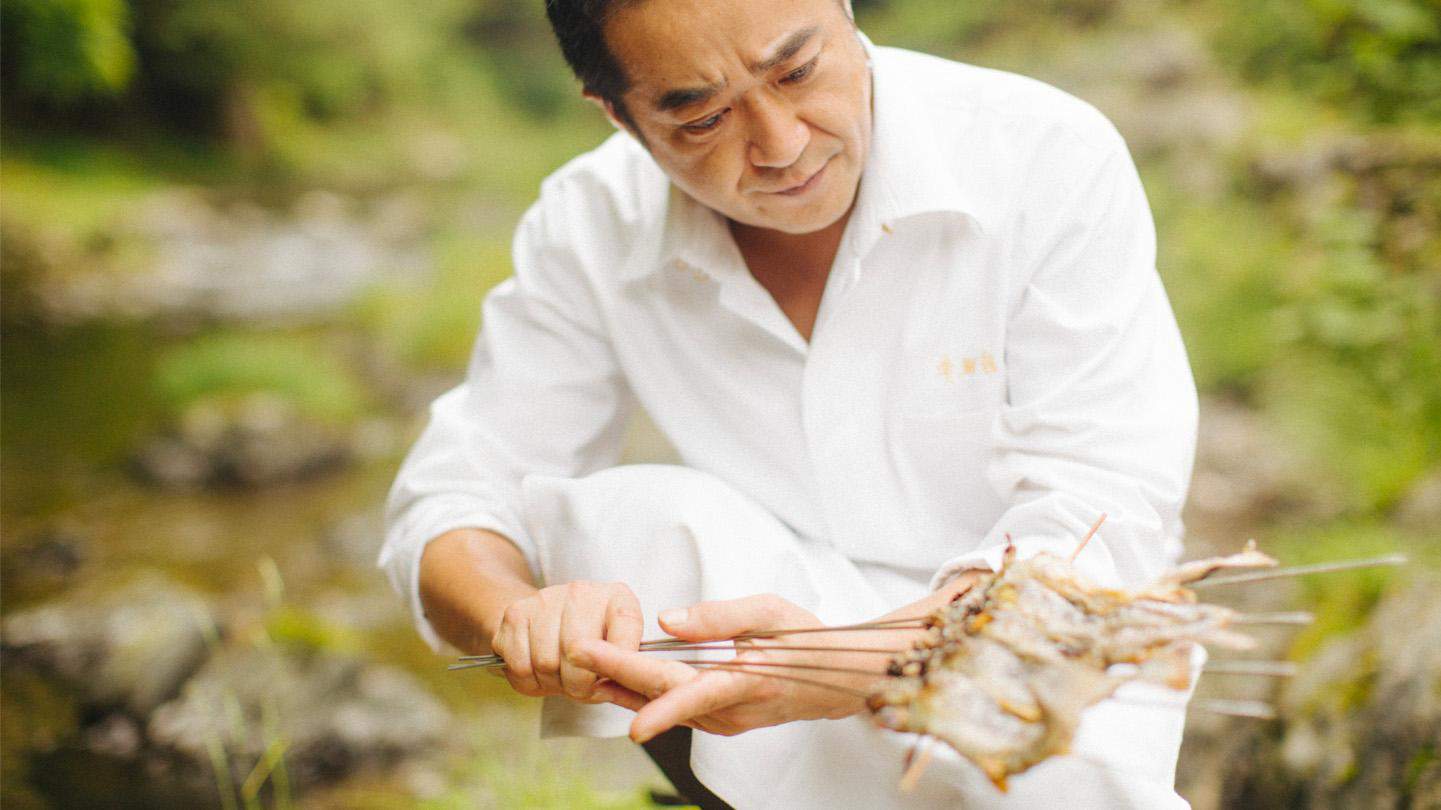 Fish caught in the stream being grilled by Hisato
Fish caught in the stream being grilled by Hisato
Perhaps the greatest lesson comes from Shigeo, the old carpenter. Starting his morning stretches before a day of sawing, sanding and knocking he reflects, “it is not possible to master all these skills in a single lifetime. In the long history of this company I am just passing through.” Perhaps 60,000 hours isn’t enough after all…
Takumi, a 60,000 Hour Story on the Survival of Human Craft is available to watch on Amazon Prime Video and takumi-craft.com





